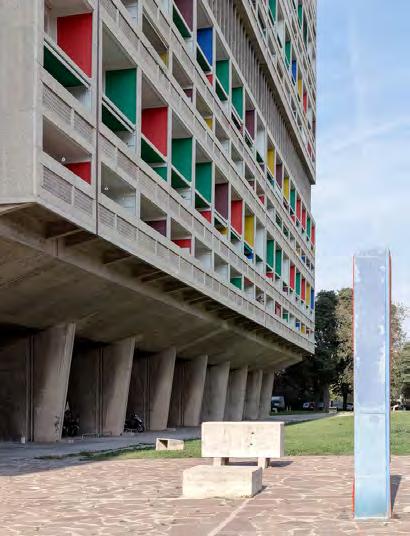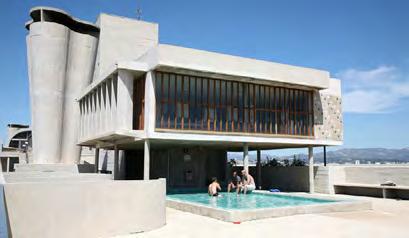
1 minute read
Who Is Le Corbusier?
A Swiss, architect, provocative writer, urban planner, painter and a polemicist. Le Corbusier was a modernist architect who was very influential on other designers. He built many structures using concrete, steel and geometric forms. Le Corbusier’s style had mechanistic influence which is reflected in many of his work, which he refers to as “the machine of living.”

Advertisement
Unite d’Habitation
One of Le Corbusier’s famous work, located in Marseilles, France. The building is a collection of apartments stacked on top of one another. It was built after the Second World War, when the need for housing was essential. The project was focused on communal living, inhabiting a range of spaces to shop, play, live and come together in a “vertical garden city.” (Knoll, 1952) Le Corbusier decided to design upwards instead of horizontally and is supported using concrete pilotis. This allowed room underneath where people can walk through and utilise the space. The whole concept behind the project was to create a “city within a city” that had a range of amenities for the residents. For example, incorporating gyms, a club, kindergarten and the roof acting as a garden terrace with a pool. The spatial configuration of the building was carefully designed, instead of the rooms being double-stacked, he designed the units so they would span from each side of the building. They were narrower but were given double height living space, which reduced the amount of corridors. Additionally, this enabled him to add more units, creating an interlocking system of residential volumes. (ibid, 1952)



How might this influence my work?
Le Corbusier’s design strategy and spatial
configuration here is very clever, creating double height spaces, which allowed additionally units to be fitted. The units are also arranged at different levels giving the space a different configuration to your normal housing style. A style which I can utilise in my own design. This case study also reflects my design proposal, of creating a range of spaces all in one building.










